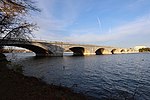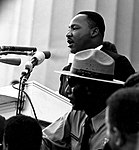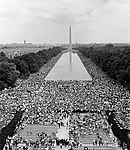Construction of Arlington Memorial Bridge

The construction of Arlington Memorial Bridge was a seven-year construction project in Washington, D.C., in the United States to construct the Arlington Memorial Bridge across the Potomac River. The bridge was authorized by Congress in February 1925, and was completed in January 1932. As a memorial, its decorative features were extensive and intricate, and resolving the design issues over these details took many years. Tall columns and pylons topped by statuary, Greek Revival temple-like structures, and statue groups were proposed for the ends of the bridge. Carvings and inscriptions were planned for the sides of the bridge, and extensive statuary for the bridge piers. The bridge itself took far longer than the anticipated two years. Problems were encountered in building the foundations, accidents occurred, and the construction of the bascule (or drawbridge) span was complex and lengthy. Even though the bridge was finished by January 1932, construction of the termini and completion of the memorial details took another six years. Budget problems created in part by the Great Depression meant that portions of the bridge project were never completed. Construction of the bridge's western terminus involved extensively enlarging an island in the Potomac River, building bridges between this island and the Virginia mainland, building a new ceremonial entrance at Arlington National Cemetery, and creating a memorial drive to connect the cemetery to the bridge. The bridge's eastern approaches were equally as complex, and required construction of a plaza to the west of the Lincoln Memorial, connecting the bridge to the Rock Creek and Potomac Parkway, and building a "watergate" (marble steps) to given the public access to the river. The bridge was added to the National Register of Historic Places in 1980.
Excerpt from the Wikipedia article Construction of Arlington Memorial Bridge (License: CC BY-SA 3.0, Authors, Images).Construction of Arlington Memorial Bridge
Arlington Memorial Bridge, Washington
Geographical coordinates (GPS) Address Nearby Places Show on map
Geographical coordinates (GPS)
| Latitude | Longitude |
|---|---|
| N 38.887222222222 ° | E -77.055555555556 ° |
Address
Arlington Memorial Bridge
Arlington Memorial Bridge
20522 Washington
District of Columbia, United States
Open on Google Maps








